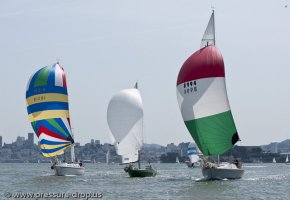I just started racing our Ericson 32-3 (1989) and we have had some disappointing results, particularly down wind. Our flying sails PHRF is 177, NFS is 192. We have an asymmetrical cruising spinnaker with no pole. The handicapper commented that the sails were a little smaller than standard for the boat. While she goes well to windward we are losing head to head speed races with slower handicapped boats down wind and dropping to the back of the fleet.
Self diagnosis so far:
So if anyone has experience with Ericsons racing and can share some tips to get us going faster, it would be much appreciated. A good source for used but serviceable sails would be helpful.
Many thanks.
Self diagnosis so far:
- Tune the rig (prior owner had it pretty slack). I have this scheduled.
- Larger asymmetrical, or add spinnaker pole fitting and full spinnaker. The asymmetrical is very frustrating in that we can't go dead down if we need to.
- We have a fixed 2 blade prop. Replacing with folding prop presumably makes quite a bit of difference, though I expect many of our competitors don't have folding props.
- Its not the bottom. We just had it hauled out.
So if anyone has experience with Ericsons racing and can share some tips to get us going faster, it would be much appreciated. A good source for used but serviceable sails would be helpful.
Many thanks.

